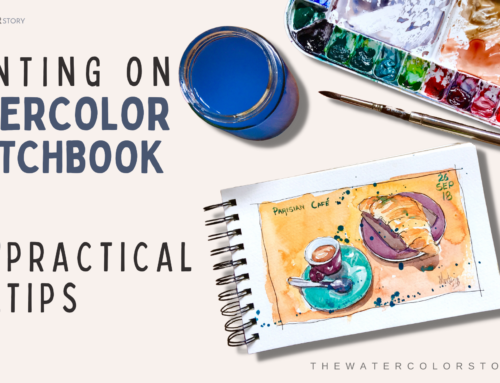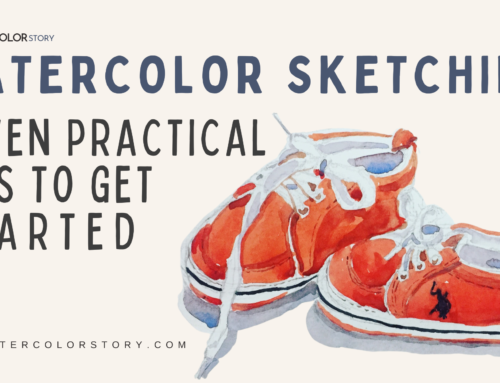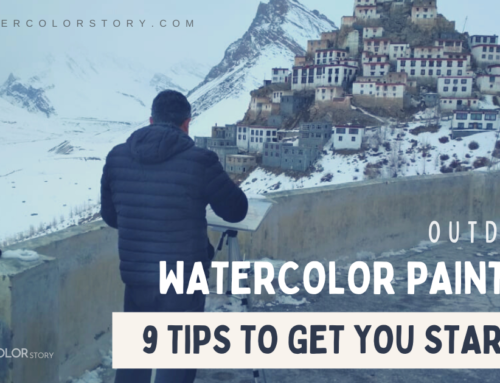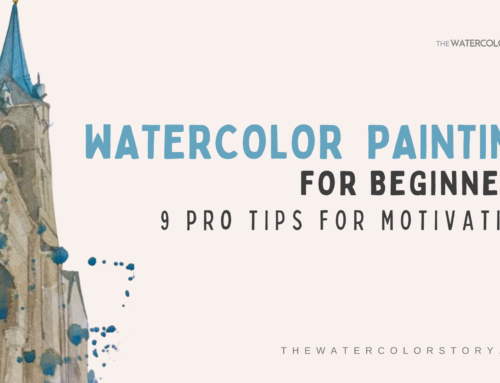Watercolor is a very wild & unpredictable medium.
This is something that I have been preaching in all my blog posts & Skillshare class. But that does not exclude it from having some basics.
We all need to get atleast some of the basics of Watercolor right if we want to excel in this medium.
By basics, it would mean some tried & true tips & techniques, which will give us very good results & also give us a base to further experiment in watercolors.
Even i started blind believing that every wash or every erroneous stroke in watercolors might create happy accidents. That does not happen most of the time.
Finally i had to restart from the basics like color theory, wash techniques, etc.
Now I wish I had the same guidance or the resources that I am about to give you in this blog post.
Here I will discuss 5 very basic Watercolor wash techniques that I think every artist should know for a better understanding of how to create beautiful works of Art.
WET ON WET

WET ON WET
This technique of applying watercolor wash is basically painting with a wet paint mix on an already wet paper surface.
Artists use this technique to produce spontaneous, soft & subtly blended color effects.
To create this effect, you will need to apply a wash of water throughout the desired area to make the surface evenly damp and then take a load of paint & water mix on a brush & lay it uniformly or as required in that wet surface.
You need to be a bit generous in this wash & make prior paint mix(with water of course) ready in your palette so that you do not run out of it in between the wash. Being spontaneous & quick is the key here.
WET ON DRY

WET ON DRY
In this wash technique, we apply a paint & water mix load with a reasonably bigger brush on a dry piece of paper.
This technique is good for creating vibrant & strong washes in a painting like a dark background of a still life or a portrait.
The idea is to work with a big brush horizontally from top to bottom thereby creating an even layer.
Try not to re-apply the paint wash again on the already done layer or else that will create undesired effects.
So start your wash in a planned manner so that you do not have to figure out where your brush goes next in between the painting process.
DRY ON DRY

WATERCOLOR WASH TECHNIQUE
This is also commonly referred to as dry-brushing is used to create dramatic effects as well as sometimes finishing touches in a painting.
Certain textures can be achieved only through this technique, due to the nature of the effects that it creates.
This technique simply involves taking paint from the palette on a brush with very little water(or no water) & applying it directly on the dry paper.
It creates a rough effect which imitates the hide & seek of light on a surface of an object or a scene in nature.
BLENDING
Blending can also be a sub-category of the WET on WET wash technique.
This technique basically involves mixing paints on a damp paper surface instead of mixing on the palette.
The results of this technique are very beautiful due to the fact that these pigments granulate & mix at a molecular level thereby creating textured feel to an otherwise plain & regular wet on wet wash.
LIFTING OUT

LIFTING OUT
This technique involves lifting out pigments from an already painted(damp) surface with a tissue/paper towel.
It creates very interesting soft areas within a painting to suggest a lighter tone.
We generally use this technique, when we want light tones but with softer edges.
I also use a moist brush sometimes to do this type of lifting out. And it works !!
Alright!!
Now that you have got a basic knowledge about these very important watercolor wash techniques, its time for you to go & practice as well as experiment using them.
You will discover more of you as a Watercolor artist I can assure you that.
Thanks for reading !!
Also
Other blog posts that I recommend reading include:







[…] 5 basic Watercolor wash techniques […]